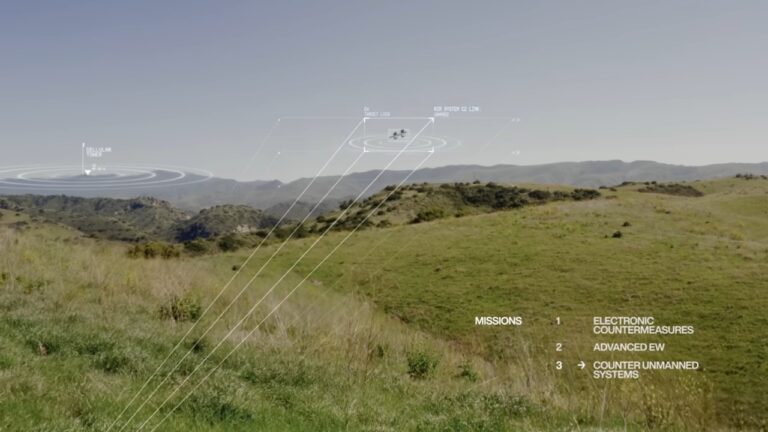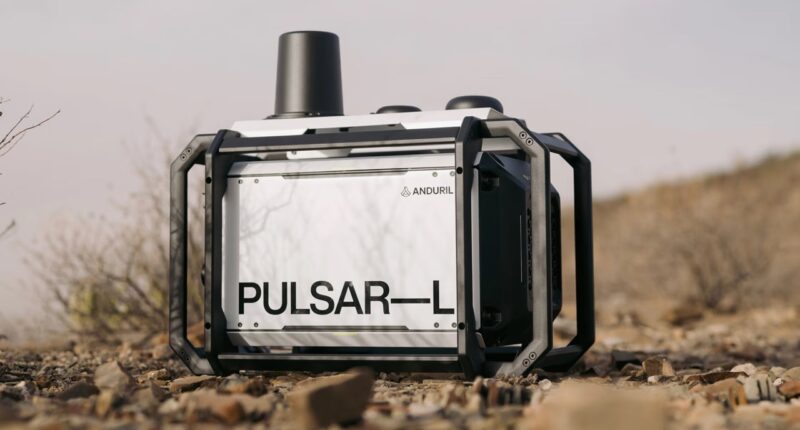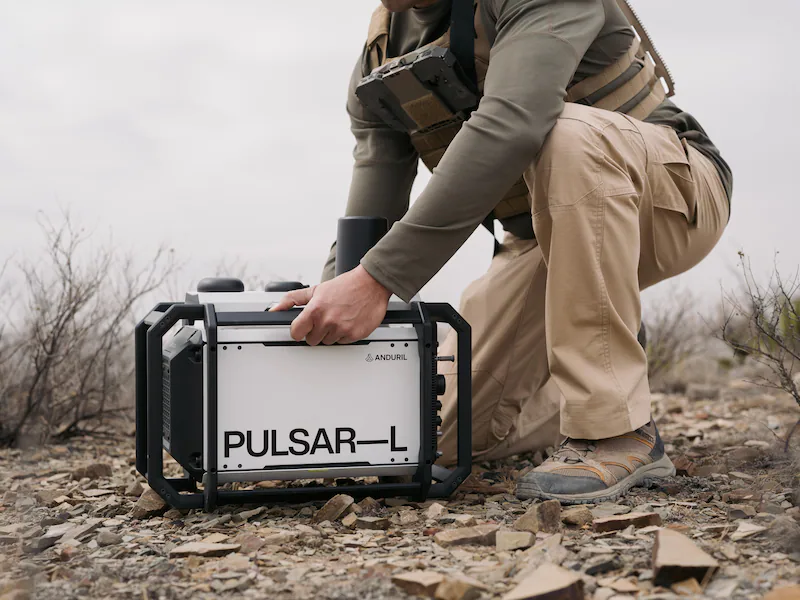Defense technology firm Anduril Industries recently introduced a new, lighter, and more mobile iteration of its Pulsar electronic warfighter system, engineered to track and neutralize enemy targets, including drone swarms.
This software-driven signal jammer, dubbed Pulsar-L, was unveiled with two distinct configurations: one tailored for airborne missions and another for expeditionary ground units. This launch builds on the company’s earlier rollout of three Pulsar variants last year, which included Pulsar-V, a vehicle-mounted version; Pulsar Alpha, an airborne model; and a fixed-site configuration.

Pulsar-L, shorthand for Pulsar-Lite, is designed to detect, identify, track, and disrupt electronic threats across diverse environments, prioritizing portability and ease of deployment. According to Anduril’s Chief Revenue and Strategy Officer, Chris Brose, the key distinctions between Pulsar-L and its predecessors are its reduced size, weight, and power demands. Measuring roughly the size of a shoebox and weighing less than 25 pounds, this compact system is far easier to transport to the tactical edge, extending its reach aboard various platforms and weapon systems.
The system tackles the shortcomings of traditional electronic warfare platforms, which often suffer from inflexible designs and limited threat adaptability. By contrast, Pulsar-L employs a software-defined architecture, enabling it to adjust to emerging challenges and support more dynamic operations. Brose revealed that Pulsar-L is already operational in the field, having been deployed since last year in what he described as highly demanding electronic warfare environments, though he refrained from disclosing specific locations.
Anduril’s development of Pulsar-L was notably swift, moving from concept to deployment in just eight months—a feat Brose attributed to the company’s shared hardware and software platforms. The system can function standalone or integrate with Anduril’s Lattice software, offering a user-friendly experience with setup times as short as a few minutes. This stands in stark contrast to older electronic warfare systems, which the company criticized as rigid, manual, cumbersome, and narrowly threat-specific, positioning Pulsar-L as a more versatile and forward-looking solution.

Both the airborne and expeditionary configurations of Pulsar-L are built for rapid deployment, requiring as little as two minutes to become operational. A standout feature is its autonomous capability, as explained by Sam El-Akkad, Anduril’s general manager of radio frequency and electronic warfare systems. Operators can switch the system to autonomous mode, where it independently scans the spectrum, distinguishes threats, and engages them without further input, streamlining its use in fast-paced scenarios.
With initial units already fielded, Anduril is now shifting focus to production expansion. El-Akkad noted that the company aims to manufacture over 100 low-rate initial production units by year’s end, with ambitions to scale up to thousands annually in the coming years. The system’s modular design allows seamless integration with existing and future tools, including the Lattice platform, which enhances tactical-level data processing. Additionally, Pulsar-L is compatible with other command-and-control systems and Common Operating Picture solutions, boosting situational awareness and coordination across operations.
Anduril emphasized that Pulsar-L is engineered to counter not just current threats but those yet to emerge, underscoring a proactive approach to defense. While Brose kept mum on the identities of early adopters, Anduril has secured notable contracts for similar technologies in recent years. Last October, an undisclosed Department of Defense entity acquired an unspecified number of Pulsar jammers within a $250 million counter-drone package, which also included 500 rounds of Anduril’s Roadrunner interceptor. Furthermore, the company is engaged in a 10-year, indefinite-delivery, indefinite-quantity contract with U.S. Special Operations Command, valued at up to $1 billion, to deliver counter-drone hardware and software, encompassing Pulsar, Lattice, Sentry Tower, and the Anvil interceptor.
